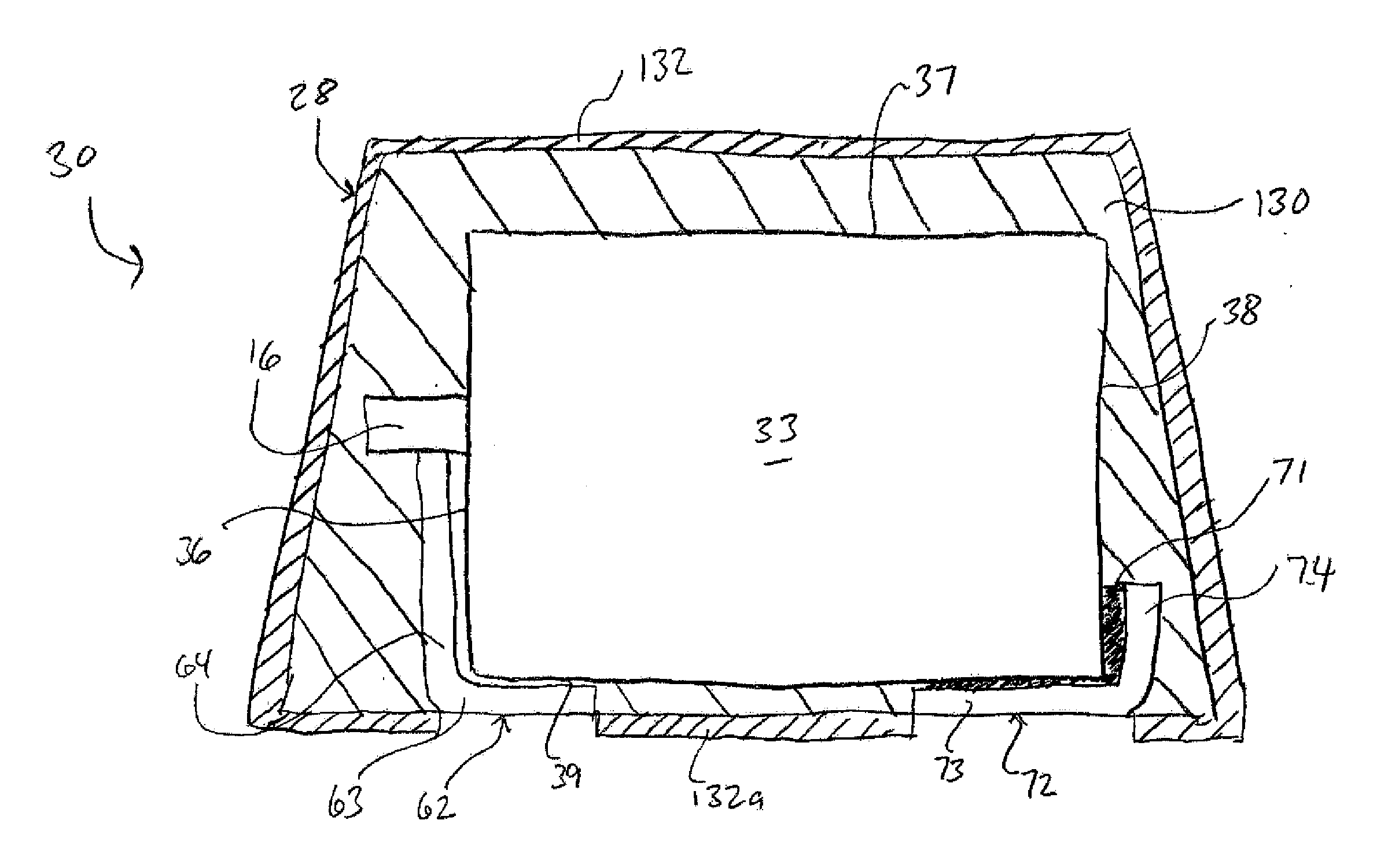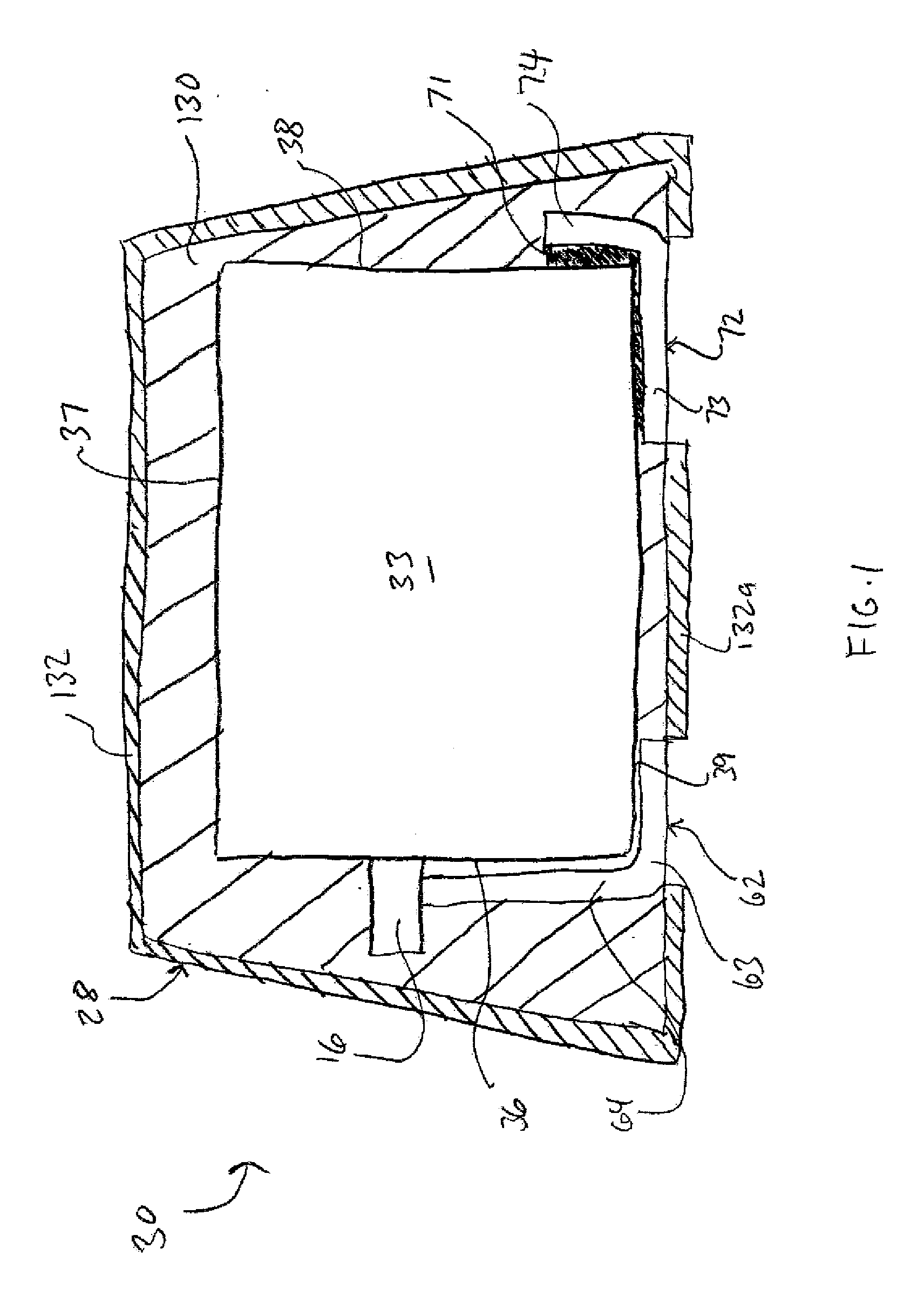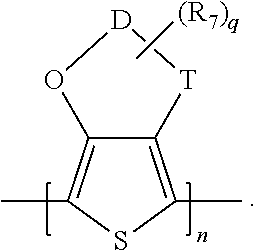Moisture Resistant Solid Electrolytic Capacitor Assembly
a solid electrolytic capacitor and moisture-resistant technology, applied in liquid electrolytic capacitors, electrical apparatus casings/cabinets/drawers, hermetically sealed casings, etc., can solve the problems of epoxy resin slowly weakening or degrading, rapid deterioration of electrical properties, and nevertheless becoming problemati
- Summary
- Abstract
- Description
- Claims
- Application Information
AI Technical Summary
Benefits of technology
Problems solved by technology
Method used
Image
Examples
example 1
[0081]70,000 μFV / g tantalum powder was used to form anode samples. Each anode sample was embedded with a tantalum wire, sintered at 1280° C., and pressed to a density of 6.8 g / cm3. The resulting pellets had a size of 1.80×1.20×2.40 mm. The pellets were anodized to 14.4V in water / phosphoric acid electrolyte with conductivity 8.6 mS at a temperature of 85° C. to form the dielectric layer. The pellets were anodized again to 60V in a water / boric acid / disodium tetraborate with a conductivity 2.0 mS at a temperature of 30° C. for 25 seconds to form a thicker oxide layer built up on the outside. A conductive polymer coating was then formed by dipping the tantalum anode into a butanol solution of iron (III) toluenesulfonate (Clevios™ C, H. C. Starck) for 5 minutes and consequently into 3,4-ethylenedioxythiophene (Clevios™ M, H. C. Starck) for 1 minute. After 45 minutes of polymerization, a thin layer of poly(3,4-ethylenedioxythiophene) was formed on the surface of the dielectric. The parts ...
example 2
[0082]Capacitors were formed in the manner described in Example 1, except that the finished parts were soaked for one (1) minute in a solution containing 0.2 wt. % of 1H,1H,2H,2H-perfluorooctyltriethoxysilane (Sigma-Aldrich) in a tetradecafluorohexane solvent (Sigma-Aldrich). The parts were then left for one (1) hour in a humid atmosphere (65° C. / 85% relative humidity). Multiple parts (500) of 150 μF / 6.3V capacitors were made in this manner.
example 3
[0083]Capacitors were formed in the manner described in Example 1, except that the finished parts were soaked for one (1) minute in a solution containing 1.0 wt. % of 1H,1H,2H,2H-perfluorooctyltriethoxysilane (Sigma-Aldrich) in a tetradecafluorohexane solvent (Sigma-Aldrich). The parts were then left for one (1) hour in a humid atmosphere (65° C. / 185% relative humidity). Multiple parts (500) of 150 μF / 6.3V capacitors were made in this manner. The capacitance and ESR of the samples were then tested under humidity as described above. The median results are set forth in Table 1 below.
TABLE 1Electrical Properties During Humidity TestingExampletime [h]CAP [μF]ESR [Ohm]dCAP [%]dESR [%]10138.490.0430——120153.250.038710.66−10.00250153.500.040310.84−6.28500153.650.040410.95−6.051000153.390.055710.7629.5320139.230.0454120154.250.038710.79−14.00250154.410.039110.90−13.11500154.350.040310.86−10.441000154.180.054110.7420.3330144.850.0434120159.230.03769.93−12.44250159.350.040110.01−6.74500159.50...
PUM
 Login to View More
Login to View More Abstract
Description
Claims
Application Information
 Login to View More
Login to View More - Generate Ideas
- Intellectual Property
- Life Sciences
- Materials
- Tech Scout
- Unparalleled Data Quality
- Higher Quality Content
- 60% Fewer Hallucinations
Browse by: Latest US Patents, China's latest patents, Technical Efficacy Thesaurus, Application Domain, Technology Topic, Popular Technical Reports.
© 2025 PatSnap. All rights reserved.Legal|Privacy policy|Modern Slavery Act Transparency Statement|Sitemap|About US| Contact US: help@patsnap.com



